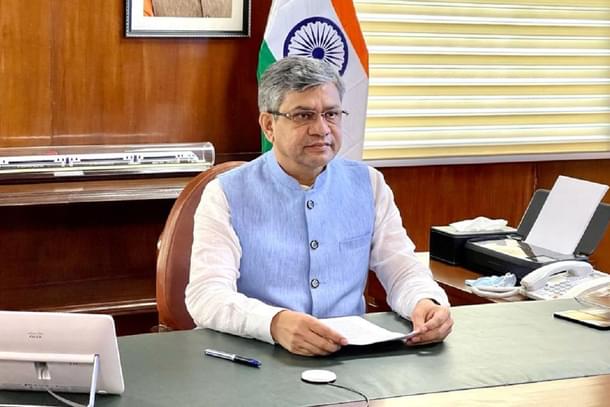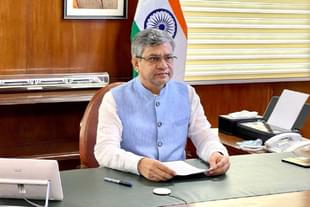Business
Post-Auction 5G Spectrum Harmonisation Process Completed In One Day; Radiowaves Allocation By 12 August: Ashwini Vaishnaw
PTI
Aug 05, 2022, 09:43 AM | Updated 10:21 AM IST
Save & read from anywhere!
Bookmark stories for easy access on any device or the Swarajya app.


Within days of conducting 5G auctions, the government has completed the spectrum 'harmonisation' process, paving the way for players' holdings to be streamlined within a particular band for greater efficiency, Telecom Minister Ashwini Vaishnaw has said.
The spectrum harmonisation process, critical for 5G services, brings together a bunch of radio wave holdings within a band into one contiguous block with the consensus of all telecom service providers.
Vaishnaw told PTI that the government is on course for the timely allocation of radiowaves bought by players (in the auction) by August 12.
The process of approvals from the Committee of Secretaries has also been completed.
"In one single day, we have completed the spectrum harmonisation process, which happens after every auction," the minister said.
The harmonisation of the spectrum leads to greater efficiencies for players, as chunks of radio-wave holdings in one band are brought together or consolidated with the consensus of all players.
"The promise we made that we will allocate spectrum by August 12...we are on time," Vaishnaw said.
A telecom department official, explaining the concept of spectrum harmonisation, drew a parallel with distributed land holdings with gaps being brought together into contiguous holding.
India's biggest ever auction of telecom spectrum that concluded on August 1 (Monday) received a record Rs 1.5 lakh crore of bids, with Mukesh Ambani's Jio cornering nearly half of all the airwaves sold with an Rs 88,078 crore bid.
Richest Indian Gautam Adani's group, whose entry in the auction was billed by some as another flash point in the rivalry with Ambani, paid Rs 212 crore for 400 MHz, or less than one per cent of all spectrum sold, in a band that is not used for offering public telephony services.
Telecom tycoon Sunil Bharti Mittal's Bharti Airtel made a successful bid of Rs 43,084 crore, while Vodafone Idea Ltd bought spectrum for Rs 18,799 crore.
Of the 72,098 MHz of spectrum offered across 10 bands, 51,236 MHz, or 71 per cent, was sold.
After every auction, the separate holdings of an individual player in a band are brought together through the harmonisation process.
All the players have to be in agreement for such shifting and consolidation to take place, a process that normally takes months.
"It is a difficult process but we have completed the harmonisation process in one single day. The team has worked very meticulously," Vaishnaw said.
Reliance Jio Infocomm has obtained 24,740 MHz spectrum in 700, 800, 1800, 3300 MHz and 26 GHz.
Adani Data Networks Ltd obtained a 400 MHz spectrum in the 26 GHz band, suitable for captive networks.
Bharti Airtel has obtained 19,867.8 MHz in 900, 1800, 2100, 3300 MHz and 26 GHz bands.
Vodafone Idea Ltd bought 6,228 MHz spectrum in 1800, 2100, 2500, 3300 MHz and 26 GHz.
Spectrum refers to the radio frequencies allocated to the mobile industry and other sectors for communication over the airwaves.
This includes FM or AM radio broadcasts and even other wireless forms of communication like Bluetooth and Wi-Fi.
Mobile phones also use this radiowaves to transmit voice calls and data.
These frequencies come in different bands, supporting specific technologies, as well as governing the speed of transmission.
The quantum of spectrum in each band is measured in MHz.
Typically, 5G offers speeds about 10 times faster than 4G, lag-free connectivity, and can enable billions of connected devices to share data in real-time.
In addition to powering ultra-low latency connections, which allow downloading full-length high-quality video or movie to a mobile device in a matter of seconds (even in crowded areas), the fifth Generation or 5G would enable solutions such as e-health, connected vehicles, more-immersive augmented reality and metaverse experiences, life-saving use cases, and advanced mobile cloud gaming, among others.
(This story has been published from a wire agency feed without any modifications to the text. Only the headline has been changed.)





